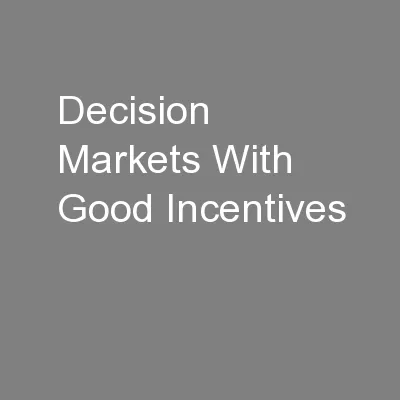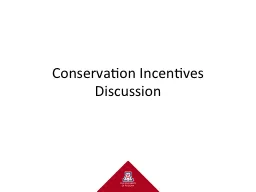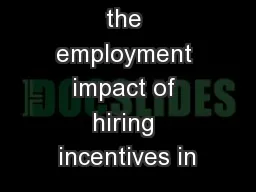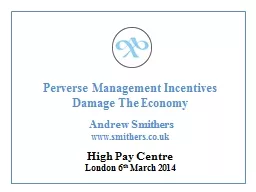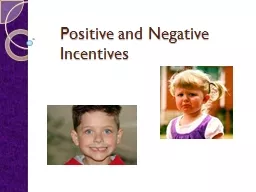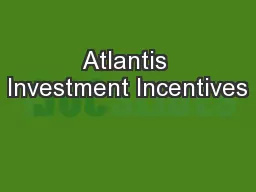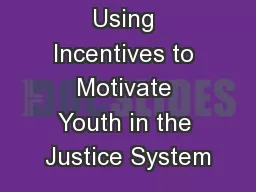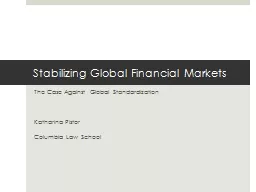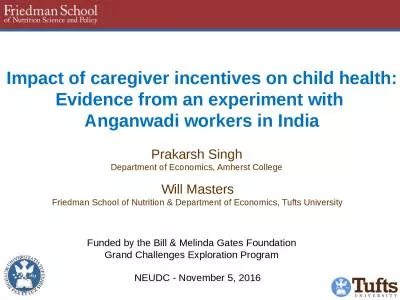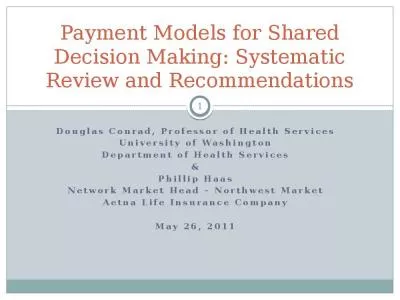PPT-Decision Markets With Good Incentives
Author : alexa-scheidler | Published Date : 2016-03-02
Yiling Chen Harvard Ian Kash Harvard Internet and Network Economics 2011 amitsomechgmailcom Prediction Markets Project Manager Markets used for prediction
Presentation Embed Code
Download Presentation
Download Presentation The PPT/PDF document "Decision Markets With Good Incentives" is the property of its rightful owner. Permission is granted to download and print the materials on this website for personal, non-commercial use only, and to display it on your personal computer provided you do not modify the materials and that you retain all copyright notices contained in the materials. By downloading content from our website, you accept the terms of this agreement.
Decision Markets With Good Incentives: Transcript
Yiling Chen Harvard Ian Kash Harvard Internet and Network Economics 2011 amitsomechgmailcom Prediction Markets Project Manager Markets used for prediction the outcome of an event. brPage 1br 2013 INCENTIVES BROCHURE FIJI TAX AND CUSTOMS INCENTIVES 20012013 INVESTMENT PACKAGE HOTEL INDUSTRY AUDIO VISUAL AGRICULTURE TAX FREE REGION ICT MANUFACTURERS FIJI MY SECOND HOME FORE C. onservation Incentives. N. ew concept:. . “payments . for ecosystem . services”. P. ay . ranchers for ecological benefits of . land management practices. V. oluntary. , non-regulatory approach to . Italy. Pilot Projects to carry out ESF related Counterfactual Impact . Evaluations. Brussels, 7. th. May 2014. Building J27 – 01/071. Project . overview. Pilot project to assess the impact on employment of hiring incentives co-. . Andrew Smithers. www.smithers.co.uk. High Pay Centre. . London 6. th. March 2014. . . Slide 1. Changed Incentives Change Behaviour.. There . has been a revolution in management pay in the UK and the US. . Positive incentives reward people for making certain choices or behaving in a certain way. . What are some examples of positive incentives?. -. Free time. Positive Incentives make us feel happy.. -Higher pay. City Meets Cape Town Chamber of Business 12. th. June 2014. Alderman Belinda Walker, Mayoral Committee Member for Community Services and Special Projects. Atlantis – Creating Linkage. Saldanha. Labour Pool. Borrowers . Spenders. Households. Business firms. Governments. Foreigners. FinancialMarkets. Indirect Finance. Direct Finance. Funds. Funds. Funds. Financial Intermediaries. Lenders. Savers. Households. . CJJ 2016 Conference. April 22, 2016 . Martha-Elin Blomquist, Ph.D.. NJCFCJ, Reno NV. Lindsey Lucero. 2. nd. Judicial District Court, Albuquerque, NM . Session Objectives:. Review adolescent development as the context for using incentives to motivate behavior change.. Debbie . Serenius. , Nutrition Advantage, LLC. . Melissa Carter, Ohio State University, South Centers. Julia Hansel, Ohio Department of Health, Creating Healthy Communities Program. Produce Perks . Southwest Ohio . John Longenecker (EFCOG Managing Director), Moderator. Norm Sandlin (B&W). Bill Shingler (Fluor). Susan Stiger (EFCOG Vice Chair, Bechtel). . James Krupnick, LBNL Ellen Livingston-Behan, URS. Rob Nagel, CH2M Hill Frank Sheppard, Parsons . The Case Against Global Standardization. Katharina Pistor. Columbia Law School. Outline. Points of departure. The Structure of Financial Markets. Implications for Regulating Global Finance. The Case for Flexible Coordination of Regulatory Diversity. Shopify Markets is a cross-border management platform through which you can sell internationally. Contact Experts in Shopify for Shopify Markets Setup in Dubai, Abu Dhabi, UAE. https://www.expertsinshopify.com/blog/shopify-markets/shopify-markets-dubai-uae.html
https://www.expertsinshopify.com/ Evidence from an experiment with . Anganwadi. workers in India. Will Masters. Friedman School of Nutrition & Department of Economics, Tufts University. NEUDC - November 5, 2016. Prakarsh Singh. Department of Economics, Amherst College. University of Washington. Department of Health Services. &. Phillip Haas. Network Market Head – Northwest Market. Aetna Life Insurance Company. May 26, 2011. 1. Payment Models for Shared Decision Making: Systematic Review and Recommendations.
Download Document
Here is the link to download the presentation.
"Decision Markets With Good Incentives"The content belongs to its owner. You may download and print it for personal use, without modification, and keep all copyright notices. By downloading, you agree to these terms.
Related Documents

